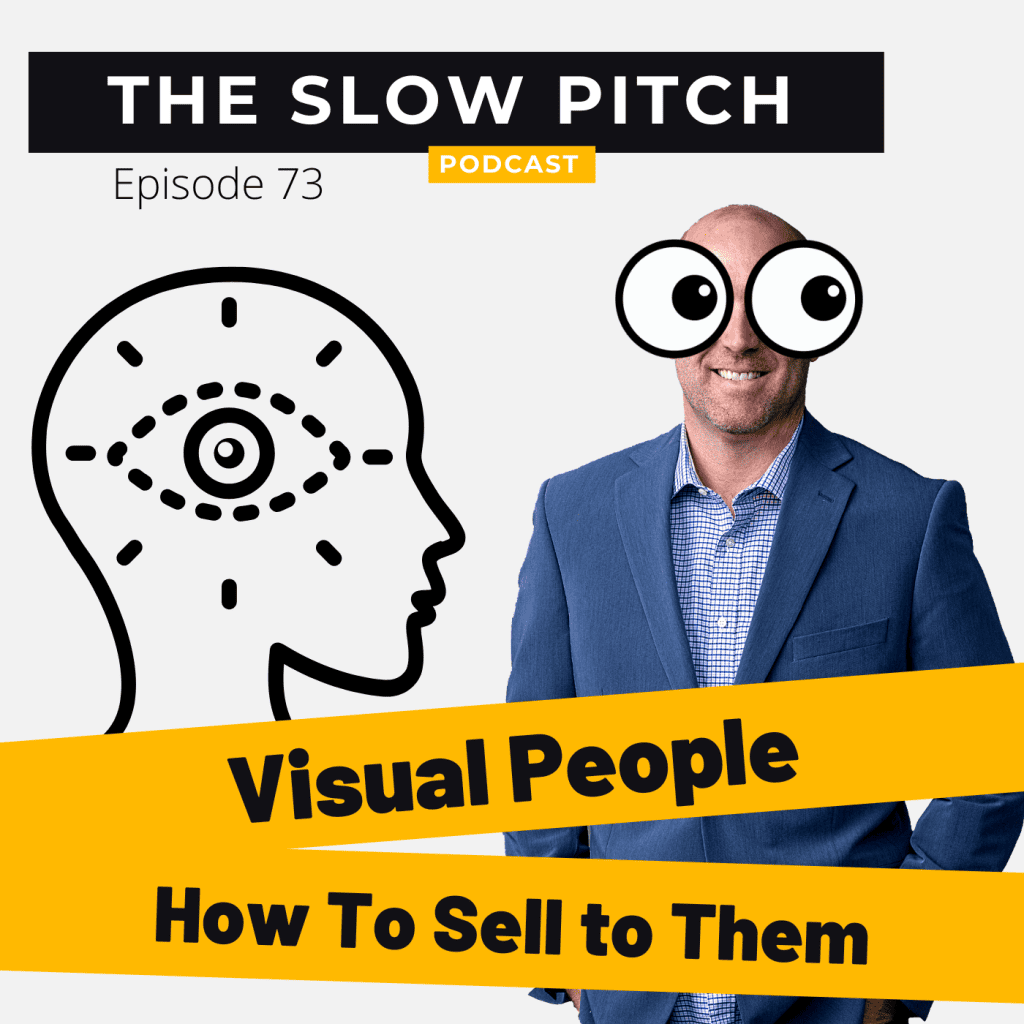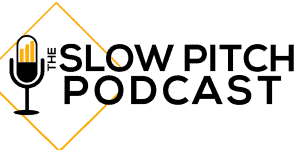Selling to Visual Learners (What You Must Do to Sell To Them)


Notes
Selling to Visual Learners
Selling to visual learners may be the easiest thing to do because you are likely a visual learner yourself. But what if you’re not? You’ll want to listen in on this episode if you’re not a visual learner yourself. Since most people are visual learners, it’s easiest to start with that style.
Visual learners are those who find it easiest to learn by seeing. They typically need to see things visually to understand them. Have you ever sat across someone who says, “I don’t see it that way,” or “I see what you’re saying.” This seems like an odd phrase if you’re not a visual learner.
In sales, you need to pick up on those types of queues and speak their “language.” If you don’t, you risk not connecting as well with the other party. Keep in mind, this isn’t a make or break deal, but it certainly makes a difference in the sales process. It may just tip the scales in your favor.
Related Articles:
Powerful Top 10 Sales Tips For Beginners
How To Prepare For an Important Sales Meeting
NOTE: Some links may be affiliate links, which means we get paid a commission when you purchase, but it the cost remains the same for you.
Music: "Clydesdale Funk" by Cast of Characters, written by: Dustin Ransom.
The Episode
Rob 00:08
Welcome back, everybody to The Slow Pitch. Thanks for listening. And we are going to talk today about something that we hit on the last episode, which is how do you as an individual tend to function or operate or look at the world or feel the world or hear the world, right? This is where we were talking about somebody that’s more visual, somebody that’s more touchy feely kind of a person, somebody that has more of an audible kind of a world about them. We’ll get into all those details here shortly. But right now we’re gonna focus on the visual people. Let’s get started.
V/O 00:40
You’re listening to The Slow Pitch Podcast, a podcast about selling less and closing more.
Rob 00:47
So we touched on this on the last episode, but it was kind of in an interview, we were speaking with Kelly, and he had some questions. And it kind of alluded to, or we started to allude to this stuff. But really what it comes down to when we’re talking about visual type people, visual type people in a sales situation, are the type of people who will when it when it comes up, you’ll notice that they use the words that describe what they see.
Rob 01:15
So when you talk to a visual and you hear them speaking, what you’re going to want to listen for are certain words that match visual language. So here’s what here’s what I mean by that, if you’re sitting across from somebody, and they say, Yeah, I see, I see that, or I don’t quite understand, or I don’t see what you’re what you mean, I don’t see what you mean. Or, look, here is what I’m thinking, if they see stuff like that, that type of person tends to be a more visual style person, all that means is when you communicate back with them is you should be speaking visually to them as well.
Rob 01:52
Again, when we spoke last episode, we talked about this, but you don’t want to overdo it. So it becomes very awkward, particularly if you’re not exactly sure. Because if they’re not that type of person, and they just happen to use that word a couple times, or words like that a couple times, then you’re gonna make some weird feelings for them. And they don’t want that to happen. So what you want to do is, listen for what they are, you’re gonna want to use all three types in your presentation so that in case you’re missing it, or you don’t hear some of that, or you don’t catch some of it.
Rob 02:24
But when you do that, you’re going to find that you’re going to get a very good vibe from them, they’re going to feel like you are understanding them that you get them that you’re speaking their language, so to speak. And that’s what this is all about. When we talk about somebody who’s visual or an auditory or somebody that’s more of a kinesthetic, those three categories, everybody fits into one or the other. And let him is there’s a primary one where you’re, you’re going to be more visual, let’s say, but you might have a secondary one.
Rob 02:55
So given all of that situation, you’re gonna want to be careful about focusing too much on one when you’re dealing with or having that conversation with that person. But the more that you pay attention to it, the better your chances are, that they will feel like you get them and you’re speaking their language, that’s really the key, right? You want to make sure that when you’re talking to them, and they’re visual, that you are showing them all of the things that they need to see, when you do your presentation, or you do your review of your estimate, anything you go through should have a visual element to that.
Rob 03:32
When you do an estimate for somebody, and you’re going through that you’ve gone through all pain, you’ve really had a good conversation, they kind of know where the budgets is, budget is you’ve talked about that range, here’s what’s going to fit, and they’ve agreed that that works. You’ve got all the people that you know, need to be involved or involved. They’ve all decided, yes, let’s go let’s get this in writing, right? This is a visual person. So when you do that, you’re gonna want to make sure that an element or more of your presentation or your so your estimate is a visual component.
Rob 04:01
So you might have pictures, you might have some examples of what you mean by XYZ, whatever that might be. You might have links to let’s say, videos, you might have things that could help them see what you’re saying, so that they get a better feel for what you’re talking about. Does that make sense? So you’re going to want to make sure that everything you do in your final presentation and decision making that everything is more inclined to speak to that person who is visual if that’s what they are.
Rob 04:30
And next time, we’re going to talk about the auditory learners. Auditory people are the people that are sound based, right and they have… they listen for things and we’re going to talk about how to deal with that next. Thanks for listening. I hope that helps. And until next time, don’t forget slow down and close more.
V/O 04:48
Thank you for listening to The Slow Pitch. Do you have a question about sales? Call or text your question at (608) 708-SLOW. That’s (608) 708-7569. Or you can email them to Questions@TheSlowPitch.com. Slow Down and Close More.
Rob 05:38
Thanks as always for listening today if you’d like this podcast, please subscribe and leave us a review. We really appreciate it. Follow us on Twitter, Instagram and Facebook at The Slow Pitch. We were mixed today as always by Johnny Polakis. We were produced by High Gravity Studios. Music credits and other notes are in the show notes section on TheSlowPitch.com and we’ll be back with another episode soon.








